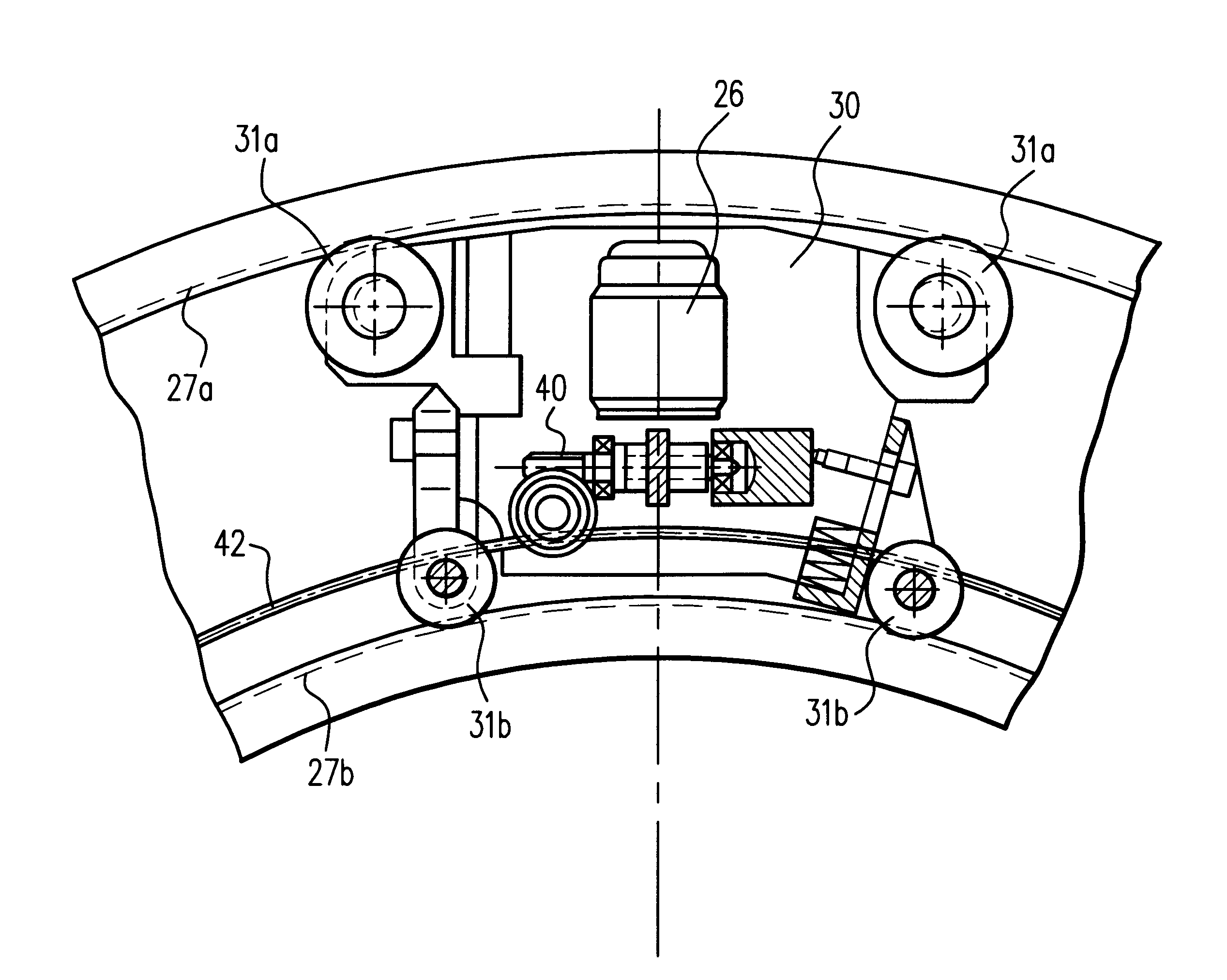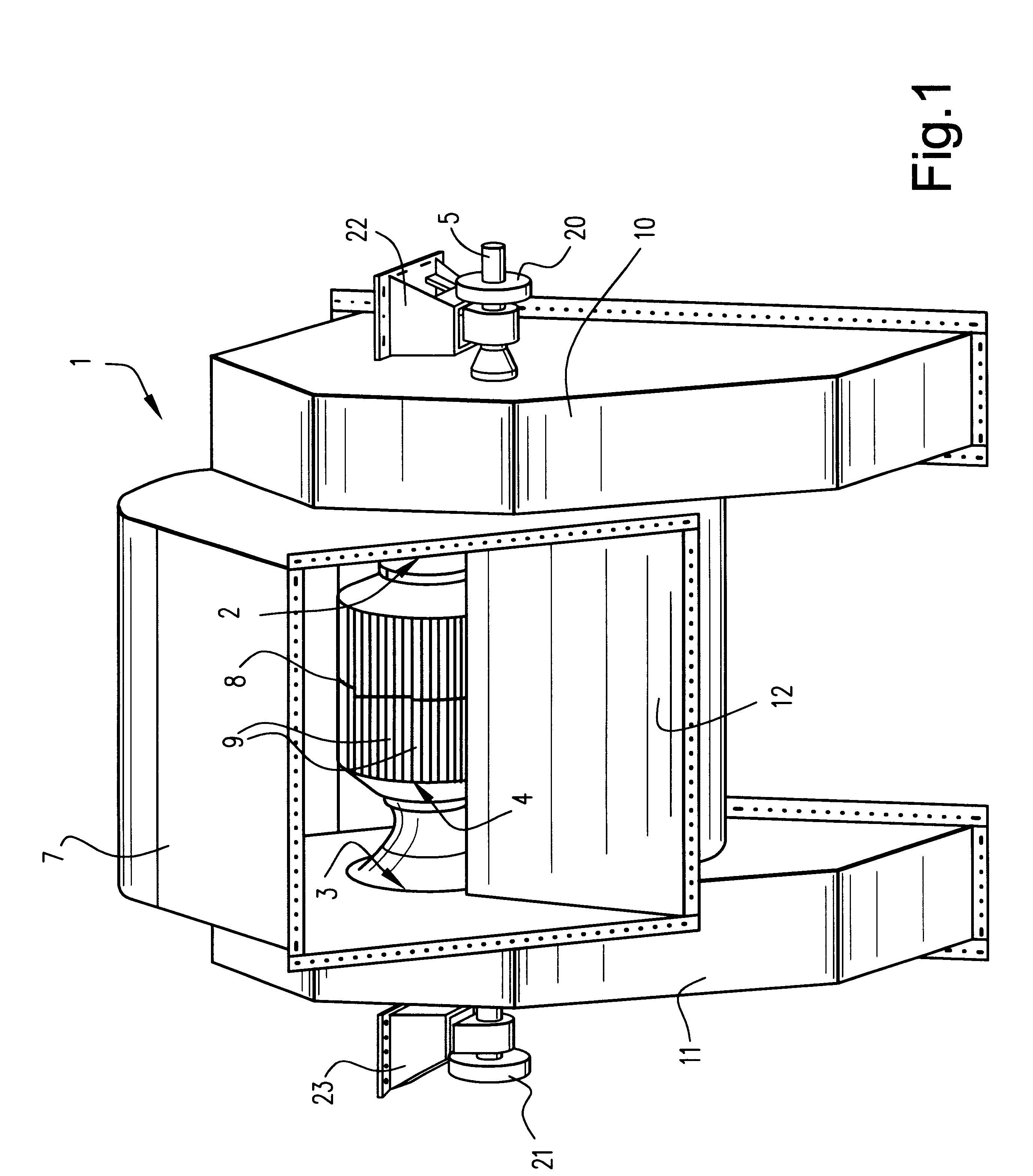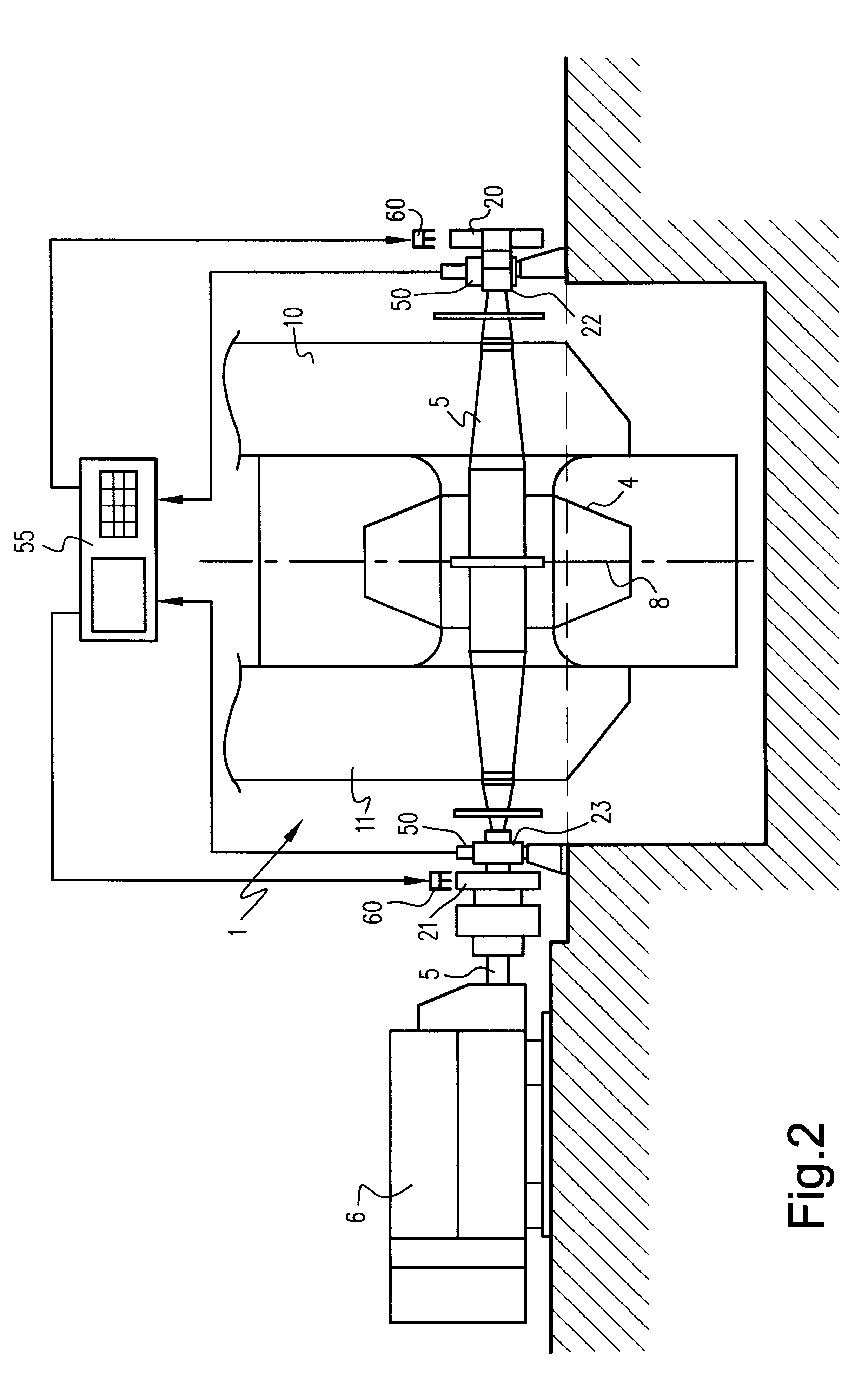Moving-weight, dynamic balancing apparatus for a rotary machine, in particular for industrial fans
a rotary machine and moving weight technology, applied in the direction of wind motor control, non-positive displacement fluid engine, liquid fuel engine components, etc., can solve the problems of vibration generated by such machines, gradual unbalance of the rotor, and exposure to the risk of particles or blowing matter deposited
- Summary
- Abstract
- Description
- Claims
- Application Information
AI Technical Summary
Benefits of technology
Problems solved by technology
Method used
Image
Examples
Embodiment Construction
FIG. 1 is a general perspective view of an industrial fan of the dual-flow centrifugal type having at least two fluid inlets 2, 3 disposed on either side of a fan wheel 4 which is mounted and supported in rotation on a rotary shaft 5 itself suitable for being rotated by means of a drive device (FIG. 2) such as an electric motor 9, for example. The fan wheel 4 forming the rotor is mounted in a structure provided with an outer cowling 7 and including, in conventional manner, a central disk 8 which may be notched and whose lateral faces are provided with a series of vanes 9 covered by plates of varying profile in a manner appropriate to the type of centrifugal fan and to the characteristics of the fluid to be blown.
There are generally two inlets 2, 3 and they form the suction units of the centrifugal fan 1.
At the suction units, the centrifugal fans 1 are preferably fitted with flow regulation systems disposed upstream from the fan wheel and disposed in suction chambers 10, 11 associate...
PUM
 Login to View More
Login to View More Abstract
Description
Claims
Application Information
 Login to View More
Login to View More - R&D
- Intellectual Property
- Life Sciences
- Materials
- Tech Scout
- Unparalleled Data Quality
- Higher Quality Content
- 60% Fewer Hallucinations
Browse by: Latest US Patents, China's latest patents, Technical Efficacy Thesaurus, Application Domain, Technology Topic, Popular Technical Reports.
© 2025 PatSnap. All rights reserved.Legal|Privacy policy|Modern Slavery Act Transparency Statement|Sitemap|About US| Contact US: help@patsnap.com



